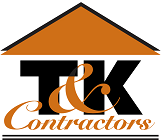Carbon Monoxide is a colorless, odorless and tasteless gas that is highly deadly in high quantities. It is a common gas excreted from un-vented kerosene and gas space heaters; leaking chimneys and furnaces; back-drafting from furnaces, gas water heaters, wood stoves, and fireplaces; gas stoves; generators and other gasoline powered equipment; automobile exhaust from attached garages; and tobacco smoke.
Installing carbon monoxide detectors throughout your home is a precautionary step to ensure increased levels of carbon monoxide are detected before any damage, or worse, death, can occur. Carbon monoxide detectors can be found at any hardware store such as Lowes or Home Depot and are recommended to be installed in every home and business.
If you do not have a working detector in your home, you should be aware of the following symptoms caused by carbon monoxide poisoning.
- Fatigue in healthy individuals
- Chest pains
- Impaired vision & coordination
- Headaches
- Dizziness
- Confusion
- Nausea
- In very high concentrations, carbon monoxide poisoning can be fatal.
In addition to a carbon monoxide detector, the EPA recommends these precautions in order to reduce exposure to carbon monoxide:
Keep gas appliances properly adjusted.
Consider purchasing a vented space heater when replacing an unvented one.
Use proper fuel in kerosene space heaters.
Install and use an exhaust fan vented to outdoors over gas stoves.
Open flues when fireplaces are in use.
Choose properly sized wood stoves that are certified to meet EPA emission standards. Make certain that doors on all wood stoves fit tightly.
Have a trained professional inspect, clean, and tune-up central heating system (furnaces, flues, and chimneys) annually. Repair any leaks promptly.
Do not idle the car inside garage.
For more information on carbon monoxide, carbon monoxide poisoning and precautions that can be taken in your home to prevent poisoning, visit the EPA here.
